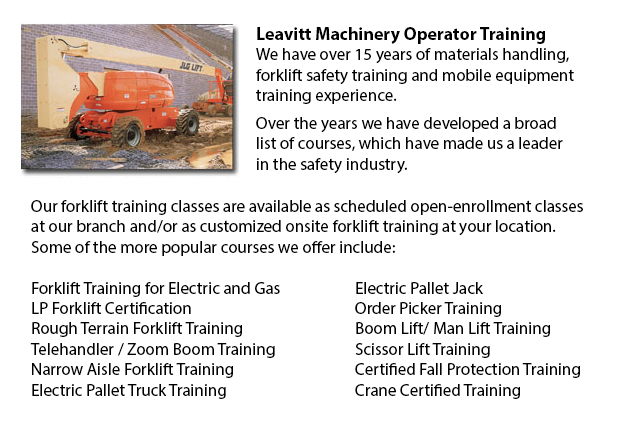
Boom Lift Safey Training Regina - Boom lifts fall under the category of aerial lifting device or elevated work platform. Most normally utilized in warehousing, construction and industry; the boom lift is really versatile that it could be used in virtually whatever surroundings.
The elevated work platform is utilized in order to enable access to heights which were otherwise unreachable using other means. There are dangers inherent when using a boom lift device. Workers who operate them should be trained in the right operating methods. Avoiding accidents is vital.
Boom Lift Training Programs cover the safety factors involved in using boom lifts. The program is suitable for individuals who operate self-propelled elevated work platforms and self-propelled boom supported elevated work platforms. Upon successfully finishing the course, participants would be given a certificate by a person who is qualified to confirm finishing a hands-on assessment.
To be able to help train operators in the safe utilization of elevated work platforms, industry agencies, federal and local regulators, and lift manufacturers all play a role in providing the necessary information and establishing standards. The most important ways to prevent accidents associated to the utilization of elevated work platforms are as follows: performing site assessments; inspecting machinery; and having on safety gear.
Important safety factors when operating Boom lifts:
Operators stay away from power line, observing the minimum safe approach distance (MSAD). Voltage could arc across the air to be able to find an easy path to ground.
To be able to maintain stability as the platform nears the ground, a telescopic boom needs to be retracted prior to lowering a work platform.
Boom lift workers should tie off to guarantee their safety. The lanyard and safety tools need to be attached to manufacturer provided anchorage, and never to other wires or poles. Tying off may or may not be needed in scissor lifts, which depends on particular employer guidelines, job risks or local rules.
The maximum slope will be specified by the manufacturer. Workers must avoid working on a slope, whenever possible. When the slope is beyond recommended conditions, the lifting device must be winched or transported over the slope. A grade can be measured without difficulty by laying a straight edge or board of at least 3 feet on the slope. Afterward a carpenter's level could be laid on the straight edge and raising the end until it is level. The percent slope is attained by measuring the distance to the ground (the rise) and dividing the rise by the length of the straight edge. Then multiply by one hundred.
-
Forklift Training Classes Regina
Forklift Training Classes Regina - Forklifts are a kind of heavy lifting equipment used in order to move and handle material efficiently and safely. Sometimes called Lift Trucks, they are made use of in different industries. Employees working with an... More -
Crane Certification Regina
Crane Certification Regina - The Crane Certification Program covers the industry suggested content which would teach the safe and efficient operation of cranes. The person will train in the following: pre-operational, operational and post operating r... More -
Telehandler Training Courses Regina
Telehandler Training Courses Regina - Employers are responsible for making sure that their operating personnel and supervisors are trained to work proficiently utilizing telehandler machines. The competence level of employees need to be assessed. If... More -
Operator Safety Training, Re-Qualification Training, In-House Instructor Training in Regina
Lift trucks are utilized in just about all industrial construction sites and in warehouse operations and in boat yards. The reach feature of a lift truck is a very important component utilized in a variety of applications like for instance when a she... More -
Heavy Equipment Operator Training Regina
Heavy Equipment Operator Training Regina - Training facilities that offer good standards in the business and not only provide field performing tasks but additional equipment training are highly sought after. Accredited schools offer students the know... More -
Wheel Loader Operator Training Regina
Wheel Loader Operator Training Regina - Cranes are industrial machines which make use of pulleys or levers so as to lift considerable loads. The Roman people utilized cranes in order to put up big monuments, that means these machines have been existi... More -
Crane Safety Training Regina
Crane Safety Training Regina - Both crane driver as well as their supervisors need to know all the possible problems connected to the operation of an overhead crane. All over North America, there is legislation that provides regulation for the safe o... More -
Scissor Lift Safety Training Regina
Scissor Lift Safety Training Regina - A Scissor Lift is a functional kind of platform that normally moves in a vertical direction. The machinery is capable of this movement due to the use of folding supports that are linked in a criss-cross pattern c... More

Forklift Training Regina
TOLL FREE: 1-888-254-6157
Regina, Saskatchewan
forklifttrainingregina.com
Email Us
About Us



